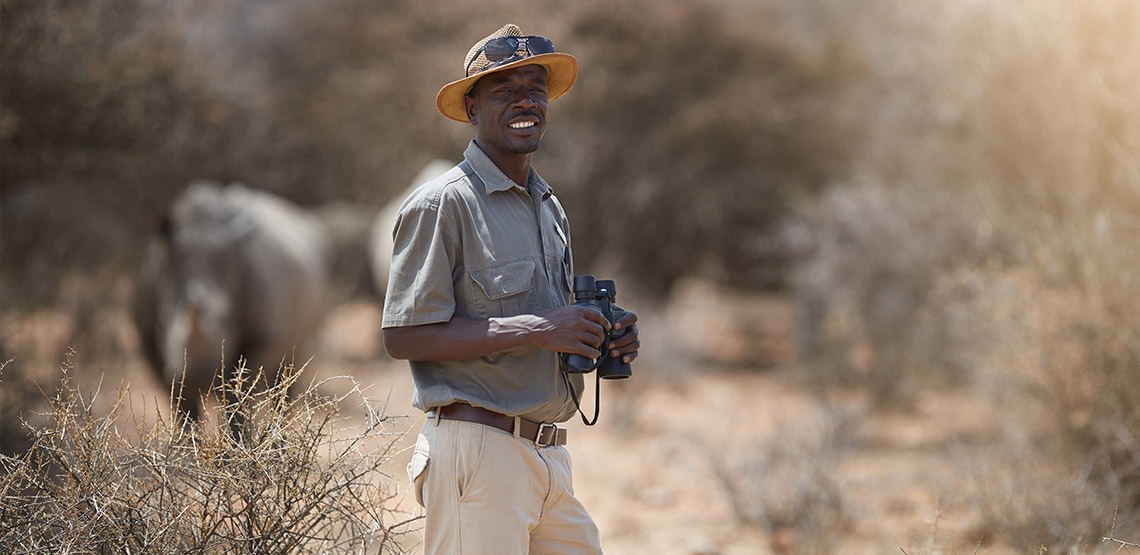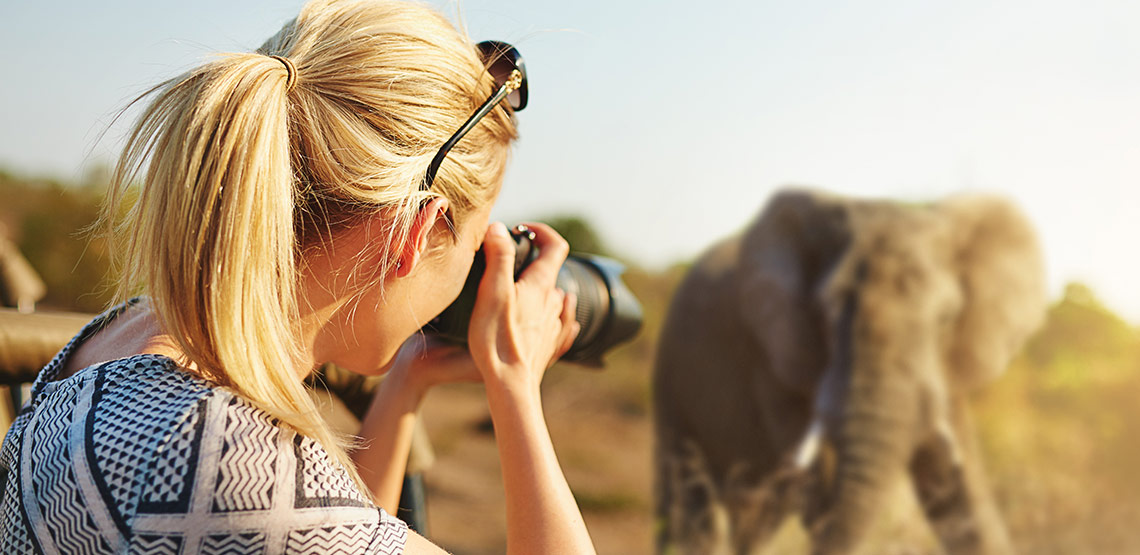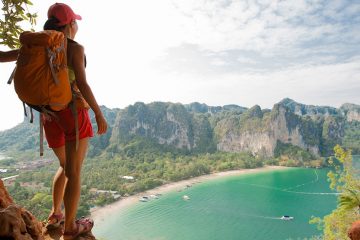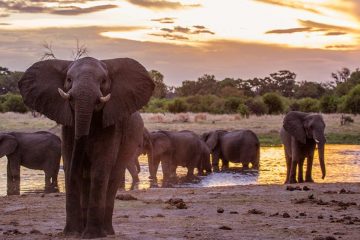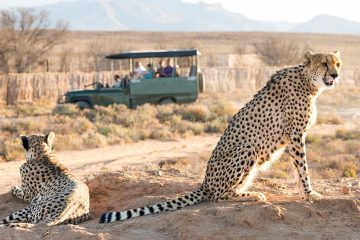Safari Travel Tips: What to Wear on an African Safari
What Should You Wear When You’re Face to Face with a Lion?
Knowing what to pack for the ultimate adventure — an African safari — can be difficult. On the one hand, you’re going to be exploring some of the great wildernesses of the world. On the other, you’re probably going to spend most of your time seated in a safari vehicle.
For your outfits, a balance of practical and comfortable is key. For your backpack, you’ll need all of the little items that are crucial out in the jungles or savannas of Africa.
Here is a comprehensive safari packing list so you’ll be nothing short of prepared for the incredible adventure that awaits.
Clothing
When packing for your safari, go for neutral-colored clothing. Avoid blue or black clothes as this can attract mosquitoes and the tsetse fly. Bright colors can also alert animals to your presence, especially if you plan on doing a walking safari, so low-key, neutral colors will help you blend into the environment more.
Khaki is the classic safari color, but grays, tans, olives and light browns are all good choices. Don’t go for camouflage clothing, though — in many countries this is associated with the military so it’s often forbidden. It’s also best to avoid pure white as safaris can be dusty!
It’s also a good idea to choose fabrics carefully. Synthetic fabrics such as nylon or polyester don’t breathe well, so they aren’t ideal for traveling in Africa where it’s likely that you’ll be sweating a lot. The best options are cotton, fine merino wool, bamboo cotton (made from bamboo fibers) or Tencel (made from eucalyptus fibers).
Clothing made from these fabrics is absorbent, quick-drying and breathable.
Between vigorous activity, sweating a lot, dirt, and general wear and tear, your clothing may not survive the trip. As such, it can be better to pack a small number of clothes that you aren’t particularly attached to, then you won’t have to worry about ripping or staining them during the trip.
Here are some of the items you’ll need to take.
A Warm Sweater or Jacket
Safaris will often leave at the crack of dawn, as you have the best chance of spotting wildlife early in the morning before the sun gets too hot and every living thing retreats into the shade for the day. In the cooler parts of the year — between June and October — you might find it gets quite chilly in the morning, so it’s best to have something you can cover up with.
Lightweight, Comfortable Trousers
While you can opt for shorts, long pants are more practical and in many countries more culturally sensitive. They can help protect you from mosquitoes, sunburn and thorns or sharp branches when you’re out of the vehicle.
Jeans, however, are the last thing you want to wear for a long day in a safari jeep. Choose loose-fitting trousers in a light fabric so you’ll be able to stay comfortable during the day. Women may also find that leggings are a comfortable option.
Two or Three Lightweight Shirts
You’ll need to pack some shirts for your safari. Ideally, you’ll have a few tops you can layer, so as the cool morning turns into the heat of midday you can strip down and still be decent. A tank top is a good base layer, with a loose-fitting shirt worn over top.
Closed-Toe Shoes
Closed-toe shoes are highly recommended for your safety. Good hiking shoes are especially important if you are going on walking safaris or going gorilla trekking. However, even on classic game drives you’ll need some protection from the elements!
It’s likely that you will be climbing in and out of your safari vehicle and doing some light walking in the bush or around your lunch spot, so it’s best to be prepared. Simple running shoes are fine if you don’t have hiking boots.
Sandals
When you’re relaxing at your safari camp, you’ll want to kick off your closed-toe shoes and wear something a little cooler, so sturdy sandals are a must.
Iceland is known for its stunning landscapes, friendly community and cultural cuisine. Here's some inspiration for what to do when traveling in Iceland.
In Your Day Pack
During your safari you can take a small pack equipped with all of the essentials. As well as water and a few snacks, the following items are always handy.
A Hat
A wide-brimmed hat will help protect you from the sun and shade your eyes so you can see better (wearing sunglasses isn’t always practical, especially if you are using a camera with a viewfinder).
Insect Repellent
Even if you are taking pills against malaria, you should take precautions to avoid mosquito bites while on safari. A good insect repellent should be in your bag at all times while in Africa. Picaridin is a highly effective repellent that has almost no odor, and has less of the unpleasant side effects of DEET (it doesn’t feel oily on your skin and it won’t melt plastics, for example).
Sunscreen
Safaris involve a lot of time sitting in a vehicle, but you will no doubt pop your head out to spot animals every now and again and the African sun is fiercely strong, so you need to stay protected. No matter how badly you want to go home with a tan, you should always protect your skin with a sunscreen of at least SPF 30.
A Good Camera
While on safari, you’re guaranteed to witness some of the most beautiful vistas and animals on the planet, so make sure you have your camera handy! Extra batteries are a great investment to make sure you can hit the shutter button for the full six or so hours that you will be on safari.

